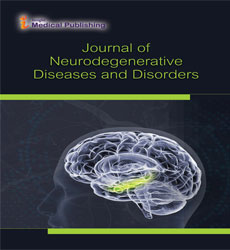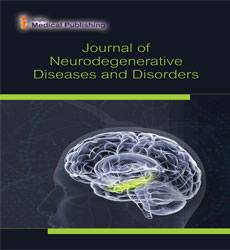A Brief Physiology of Motor Neuron Disease
Alessandro Rabbito*
Department of Pharmaceutical Sciences, Coventry University, UK
- *Corresponding Author:
- Alessandro Rabbito Department of Pharmaceutical Sciences, Coventry University, UK, Email: Shekher¬_Mohan@nu.edu.pk
Received: December 03, 2021; Accepted: December 17, 2021; Published: December 24, 2021
Citation: Alessandro Rabbito (2021) A brief physiology of motor neuron disease. J Neurodegenero Dis Disord.Vol.4 No.1: 001.
Introduction
Engine neuron infections or engine neuron sicknesses (MNDs) are a gathering of uncommon neurodegenerative issues that specifically influence engine neurons, the phones which control willful muscles of the body. They incorporate amyotrophic sidelong sclerosis, moderate bulbar paralysis (PBP), pseudobulbar paralysis, moderate strong decay, essential parallel sclerosis, spinal solid decay and monomelic amyotrophy, as well as a few more extraordinary variations looking like ALS. Motor neuron illnesses influence the two kids and adults. While each engine neuron illness influences patients in an unexpected way, they all cause development related side effects, principally muscle weakness. Most of these illnesses appear to happen haphazardly without known causes, however a few structures are inherited. Studies into these acquired structures have prompted disclosures of different qualities that are believed to be significant in seeing how the infection occurs. Symptoms of engine neuron illnesses can be first seen upon entering the world or can come on leisurely further down the road. A large portion of these infections deteriorate over the long run; while some, like ALS, abbreviate one's future, others do not. Currently, there are no endorsed medicines for most of engine neuron problems, and care is for the most part indicative.
Signs and indications rely upon the particular infection, yet engine neuron sicknesses commonly manifest collectively of development related symptoms. They come on leisurely, and deteriorate throughout over 90 days. Different examples of muscle shortcoming are seen, and muscle issues and fits might happen. One can experience issues breathing with climbing steps (effort), trouble breathing while resting (orthopnea), or even respiratory disappointment assuming breathing muscles become involved. Bulbar side effects, including trouble talking (dysarthria), trouble gulping (dysphagia), and exorbitant salivation creation (sialorrhea), can likewise happen. Sensation, or the capacity to feel, is normally not impacted. Passionate aggravation (for example pseudobulbar influence) and mental and social changes (for example issues in word familiarity, independent direction, and memory) are additionally seen. There can be lower engine neuron discoveries (for example muscle squandering, muscle jerking), upper engine neuron discoveries (for example energetic reflexes, Babinski reflex, Hoffman's reflex, expanded muscle tone), or both. Engine neuron sicknesses are seen both in youngsters and in adults. Those that influence kids will quite often be acquired or familial, and their manifestations are either present upon entering the world or show up prior to figuring out how to walk. Engine neuron sickness depicts an assortment of clinical issues, portrayed by moderate muscle shortcoming and the degeneration of the engine neuron on electrophysiological testing. As examined over, the expression "engine neuron sickness" has shifting implications in various nations. Essentially, the writing conflictingly arranges which degenerative engine neuron problems can be incorporated under the umbrella term "engine neuron illness". Inconsistent or obtained MNDs happen in patients with no family background of degenerative engine neuron sickness. Acquired or hereditary MNDs stick to one of the accompanying legacy designs: autosomal prevailing, autosomal passive, or X-connected. A few issues, similar to ALS, can happen inconsistently (85%) or can have a hereditary reason (15%) with similar clinical side effects and movement of disease. UMNs are engine neurons that venture starting from the cortex to the brainstem or spinal cord. LMNs begin in the foremost horns of the spinal rope and neurotransmitter on fringe muscles. Both engine neurons are fundamental for the solid withdrawal of a muscle, yet harm to an UMN can be recognized from harm to a LMN by actual test.
As examined over, the expression "engine neuron sickness" has shifting implications in various nations. Essentially, the writing conflictingly arranges which degenerative engine neuron problems can be incorporated under the umbrella term "engine neuron illness".
Acknowledgments
The authors are thankful for the acceptance of the article and its publications in the journal.
Conflict of Interest
None of the authors have any conflicts of interest with this work.

Open Access Journals
- Aquaculture & Veterinary Science
- Chemistry & Chemical Sciences
- Clinical Sciences
- Engineering
- General Science
- Genetics & Molecular Biology
- Health Care & Nursing
- Immunology & Microbiology
- Materials Science
- Mathematics & Physics
- Medical Sciences
- Neurology & Psychiatry
- Oncology & Cancer Science
- Pharmaceutical Sciences
